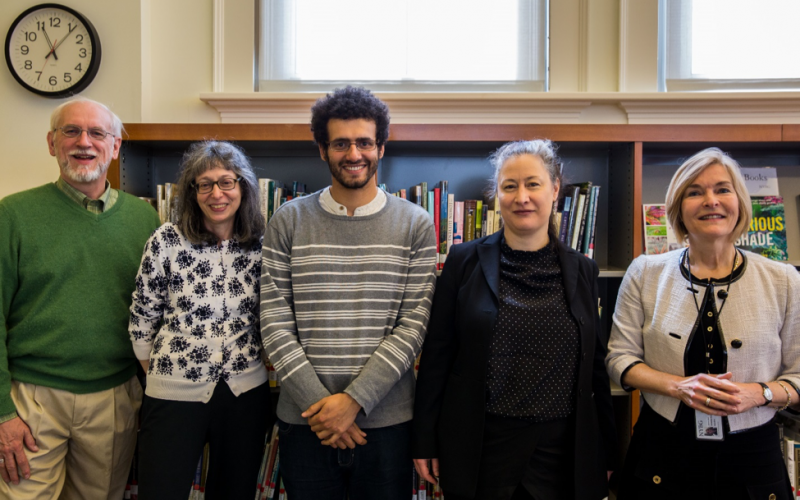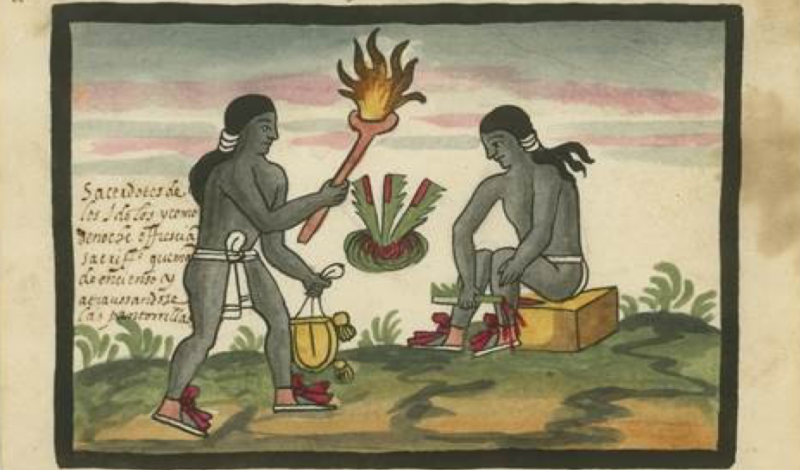A New World of Medicines
Posted in From the Library, Humanities Institute on August 1 2017, by Vanessa Sellers

On May 12, 2017, the Humanities Institute of The New York Botanical Garden and the New York Academy of Medicine Library co-presented the Garden’s Science-Humanities Seminar featuring the French scholar Samir Boumediene, from the Centre National de la Recherche Scientifique, Lyon. Boumediene’s talk was entitled A New World of Medicines: Amerindian Pharmacopoeias During the Spanish Colonization, and he spoke to a completely filled Mertz Library Reading Room. Boumediene’s presentation focused on his new—and already largely sold out—book, which, based on his Ph.D. dissertation, had just recently been published in France as La Colonisation du Savoir, Une Histoire des Plantes Médicinales du Nouveau Monde,1492–1750 (Vaulx-en-Velin: Les Éditions des Mondes à Faire, 2016).
Opening the morning’s discussion, Vanessa Sellers, Research Coordinator of NYBG’s Humanities Institute, and co-host Lisa O’Sullivan, NYAM’s Vice President and Director of the Library and Center for the History of Medicine, welcomed the audience. Before introducing the speaker, Sellers and O’Sullivan both expressed the importance of collaborative science-humanities events, promising further shared programming in areas of inquiry that connect both institutions. The speaker was known to many at NYAM already, since he conducted part of his research in their world-renowned historical library as the 2013–2014 Audrey and William H. Helfand Fellow in the History of Medicine and Public Health, where he was assisted by Arlene Shaner, manager of the Academy’s Historical Collections, who was present at the seminar along with Paul Theerman, Associate Director of the Academy Library and Center for the History of Public Health.
Boumediene’s excellent presentation provided a new, in-depth look at the story of New World medicinal plants from 1492 until the mid-18th century, extending to the presages of the Haitian Revolution (1790s). Examining botanical expeditions, the drug trade, religious missions, and everyday life practices, the presentation explained in detail how Europeans appropriated both American materials and indigenous knowledge during that historical period. His presentation offered the audience some surprising new insights, for example, how Europeans rejected some medicinal plants and how Indians or slaves in turn protected their knowledge through secrecy, frauds, and even poisoning.

Courtesy of The John Carter Brown Library, Brown University
Boumediene showed the audience four key images that illustrated the various narratives and set the stage for a much-needed re-assessment of this fascinating topic. The illustrations highlighted the problem of science and colonization, the understanding of ‘novelty,’ the control of distance, and medicinal plants as a tool of resistance, among other aspects. A lively discussion followed the presentation, as botanists asked further questions about specific plant species and historians exchanged thoughts about relatively little-studied literature and source material that might bring to light further information on the subject. Also requested, and on everyone’s wish list, no doubt: an English translation of Samir Boumediene’s important work—please stand by.

